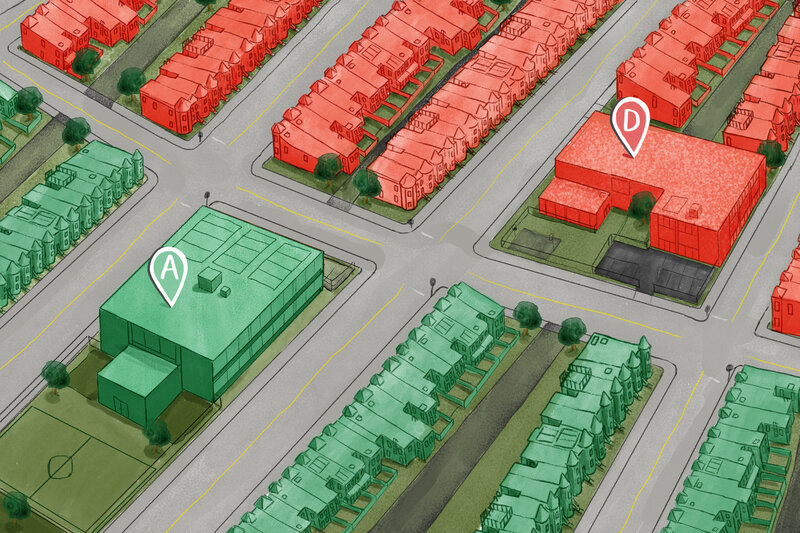Race, School Ratings And Real Estate: A 'Legal Gray Area'

With her infant son in a sling, Monique Black strolls through a weekend open house in the gentrified Shaw neighborhood of Washington, D.C. There are lots of factors to consider when looking for a home — in this one, Monique notices, the tiny window in the second bedroom doesn't let in enough light. But for parents like Black and her husband, Jonny, there's a more important question: How good are the nearby schools?
It's well known in the real estate industry that highly rated schools translate into higher housing values. Several studies confirm this and even put a dollar figure on it: an average premium of $50 a square foot, in a 2013 national study.
In Chappaqua, N.Y., an affluent bedroom community for New York City, the town supervisor recently went so far as to declare that, "The schools are our biggest industry — whether you have kids in the school or not, that's what maintains our property values."
Related Stories
But some advocates for fair housing see a potential problem with the close ties between school ratings and real estate. They say the common denominator, too often, is race. And they argue that the problem has intensified in the last decade with new web platforms bringing all kinds of information directly to homebuyers.
"A school rating map mirrors a racial dot map," showing patterns of segregation and diversity, observes Sally Santangelo, the executive director of Central New York Fair Housing, a group that provides education and legal assistance to oppose housing discrimination.
That, in turn, raises some complicated questions about how factors like test scores and school ratings are used to influence homebuying decisions.
Characteristics like safety and parent involvement — the qualities Monique and Jonny say they value in a school— can be hard to quantify. Most states base their school ratings primarily on more easily measured factors, like standardized test scores and graduation rates. And these indicators, in turn, are heavily influenced by inequities of race and class.
There's a large, persistent and well-documented gap in test scores between black and Hispanic students and their white and Asian peers. There are many reasons for these disparities: income and wealth gaps, disciplinary policies that "push out" black students from school systems, less experienced teachers, the early-learning gapbetween high- and low-income children. But they all end up reflected in one number: a school rating.
"A lot of time, with schools that serve majorities of students of color, you get a negative rating because the test scores are low," says Genevieve Siegel-Hawley, an assistant professor who studies race and housing at Virginia Commonwealth University. But, she says, "most of the variation in test scores is explained by the kids' own poverty or the poverty of their school."
Housing patterns and school ratings, of course, also reinforce each other. In most places around the country, school budgets are partly linked to local property taxes. Highly rated schools beget higher housing values, which in turn beget more richly resourced schools.
It's a virtuous cycle for a town like Chappaqua, but a vicious cycle elsewhere.
What does all this mean for potential homeowners like Monique Black? Or for realtors Race, School Ratings And Real Estate: A 'Legal Gray Area' : NPR Ed : NPR:



